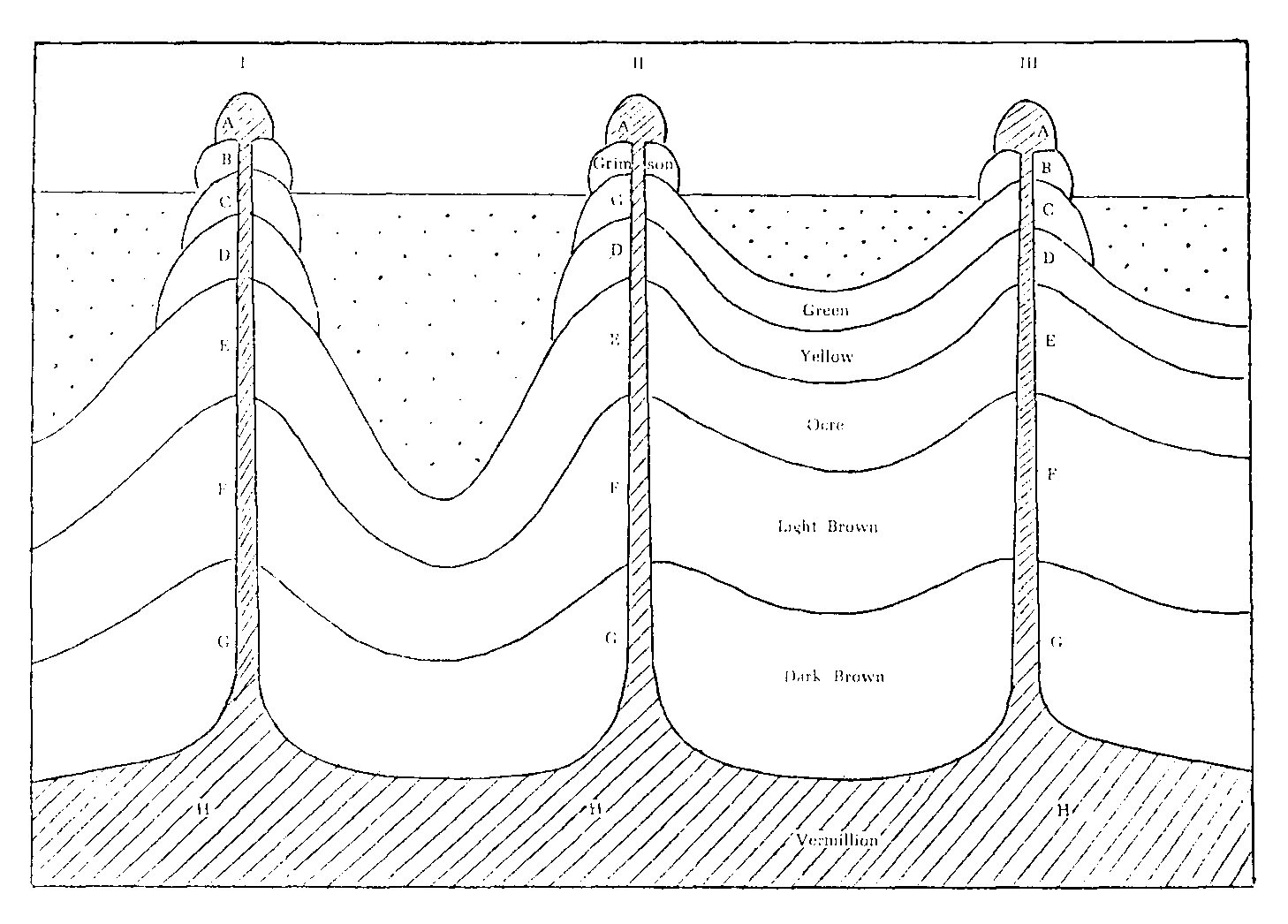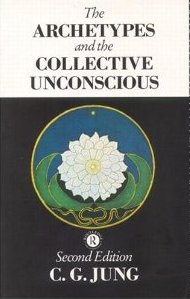The collective layer of the unconscious
The collective level is that part of our nature which we share with mankind in general. It does not consist of racial memories or inherited facts (Jung, CW 8a, par. 718 - 720 & CW 10, par. 13 - 14). The unconscious does not come to us perfectly "flat" like a plateau, but you can think of it as having "hills and valleys" which, like the shape of the brain, are common to all humans, and possibly animals to some extent. The "valleys" are where experiences, like "rain water", leave their traces. They tend to collect there, providing us with ways to organize and interpret our perceptions. These modes of orientation and understanding are common to all people, making it possible for us to communicate with each other, once a common language is found.
The diagram shown below was apparently devised by Jung himself (Hannah, 1976, p. 17) and was shown at his June 9, 1934 E.T.H. lecture (Jung, 1959, p. 115). It is an attempt at representing schematically what the situation among three individuals (or three nations) might be like. It attempts to show various regions in the collective unconscious. Of it, Jung said that A represents the individual and is the highest point and should be colored vermilion (scarlet red). B represents the family and is to be colored Crimson; C is the clan and should be colored green; D is the nation and should be shown in yellow; E is a large group (e.g., Europe) and should be in ochre; F depicts our primeval ancestors and should be light brown and G is the level of our animal ancestors in general and should be dark brown. He described H as representing the central fire, from which we all draw. If this scheme approximates the truth, then it may well be possible that communication is also possible via the deepest layers of the collective unconscious (i.e., something like telepathy or intuitions) and that we are all interconnected in some way.

Previous section Next section List of sections List of chapters


